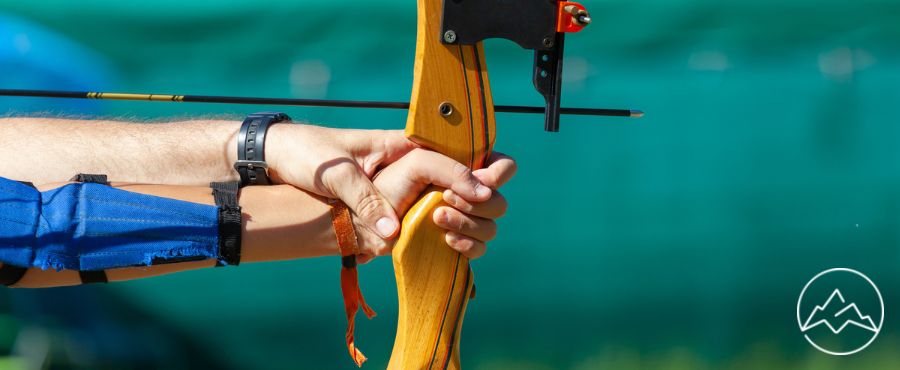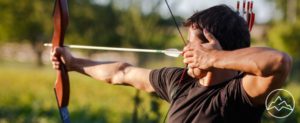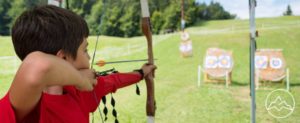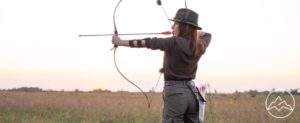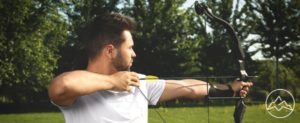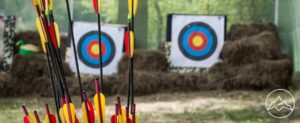Archery, like any art form, requires a delicate balance of technique and precision. The archer’s bow hand grip, often overlooked by beginners, is a vital component in achieving shooting success. Just as a painter holds a brush, an archer’s hand must gracefully cradle the bow, creating a seamless connection between body and weapon. This connection is the key to accuracy and consistency in shooting. Proper hand placement is essential, with the hand sliding up to the arrow shelf and rotating 45° to the riser. Mistakes in grip can lead to a cascade of issues, from tuning problems to inconsistent draw positions. By understanding the nuances of hand placement and grip, archers can improve their accuracy and elevate their skill level. In this article, we will explore the proper bow hand grip, common mistakes to avoid, and techniques to enhance shooting accuracy.
Key Takeaways
- Proper hand placement and grip are essential for shooting success
- Mistakes in grip can lead to tuning problems and inconsistent draw positions
- Custom grips are used in recurve bows for proper hand placement
- Relaxation in the bow hand grip is crucial for accuracy
Proper Hand Placement
Proper hand placement in bow grip involves sliding the hand up to the arrow shelf and rotating the hand 45° to the riser, ensuring a relaxed grip between the thumb and lifeline while avoiding crossing the lifeline. This positioning allows for a stable and controlled hold on the bow, which is crucial for accuracy and consistency in shooting. Custom grips are often used in recurve bows to assist with proper hand placement, providing a comfortable and secure grip. Additionally, a relaxed hand technique is essential for a proper grip. Over-gripping or grabbing the bow can lead to tension and inconsistency in shooting. By maintaining a relaxed hand, archers can improve their shooting accuracy by promoting a smooth release and minimizing unwanted movements.
Common Mistakes
One might find it surprising that even experienced archers often struggle to avoid common errors when it comes to their bow hand grip. Overcoming grip tension is crucial in achieving a proper bow hand grip. Many archers tend to over-grip the bow, leading to unnecessary tension and decreased accuracy. Correcting finger placement is another important aspect of a proper grip. Some archers have a tendency to use an open-hand style, where the fingers are not properly wrapped around the bow handle. This can result in an unstable grip and inconsistent shots. Grabbing the bow instead of allowing it to rest between the thumb and lifeline is also a common mistake that affects accuracy. Inconsistent hand placement is yet another error that can hinder shooting success. By being aware of these common mistakes and actively working to correct them, archers can improve their bow hand grip and ultimately enhance their shooting accuracy.
Improving Accuracy
Improving shooting accuracy in archery involves refining various components of form, including the technique used for gripping the bow. The importance of relaxation in the bow hand grip cannot be overstated. A relaxed hand allows for better control and reduces the likelihood of torque or unwanted movement during the shot. This is especially crucial in compound bows, where a completely relaxed grip and minimal contact with the handle are required. On the other hand, recurve bows often have custom grips that assist with proper hand placement. These custom grips provide a consistent reference point for the hand, ensuring that it is positioned correctly each time. Custom grips also enhance comfort and stability, which contribute to improved accuracy. Therefore, using a custom grip on a recurve bow can greatly benefit archers in achieving a proper and consistent hand placement, ultimately leading to better shooting accuracy.
Frequently Asked Questions
What are some tips for adjusting the bow hand grip for different shooting styles, such as target shooting versus hunting?
When it comes to adjusting the bow hand grip for different shooting styles, such as target shooting or hunting, proper bow hand alignment is crucial. For target shooting, a consistent and secure grip is essential to maintain accuracy. This involves aligning the hand with the arrow shelf and rotating it 45° to the riser, while gripping the bow between the thumb and lifeline. On the other hand, hunting requires a relaxed grip to minimize movement and noise. Adjusting finger placement accordingly ensures a secure and controlled grip for both shooting styles.
Are there any recommended exercises or drills to help improve the strength and flexibility of the hand for a proper bow grip?
Hand strengthening exercises and flexibility drills can greatly improve the strength and flexibility of the hand for a proper bow grip. Hand strengthening exercises, such as squeezing a stress ball or using hand grippers, target the muscles in the hand and forearm, improving grip strength. Flexibility drills, such as finger stretches and wrist rotations, increase the range of motion in the hand and wrist, allowing for a more comfortable and effective bow grip. Incorporating these exercises and drills into a regular training routine can enhance shooting performance.
Can the shape and size of an archer’s hand affect their ability to achieve a proper bow hand grip?
Hand anatomy and finger positioning can significantly impact an archer’s ability to achieve a proper bow hand grip. The shape and size of an archer’s hand can affect their ability to securely hold the bow and maintain proper form. Finger positioning, particularly the placement of the thumb and lifeline, is essential for a correct grip. By understanding the hand’s anatomy and practicing proper finger positioning, archers can improve their ability to achieve a consistent and accurate bow hand grip.
How important is it to have a consistent grip pressure throughout the entire shot process?
Consistent grip pressure throughout the entire shot process is of paramount importance in archery. It ensures a stable and controlled release, which directly impacts accuracy. Varying grip pressure can lead to inconsistent arrow flight, affecting both horizontal and vertical accuracy. Maintaining a consistent grip pressure allows for better control over the bow and minimizes the potential for errors caused by grip variation. Thus, archers must focus on developing and maintaining a consistent grip pressure to achieve optimal shooting accuracy.
Are there any specific hand positions or techniques to help alleviate hand fatigue during long practice sessions?
Hand fatigue prevention during long practice sessions can be achieved through proper hand placement techniques. One effective method is to ensure a relaxed grip, allowing for minimal contact with the handle of the bow. Additionally, archers can incorporate custom grips on recurve bows for improved hand positioning. By avoiding over-gripping, open-hand style, grabbing the bow, and inconsistent hand placement, archers can alleviate hand fatigue and maintain accuracy during extended practice sessions.
Conclusion
In conclusion, mastering the art of proper bow hand grip is essential for archers, especially beginners, to achieve shooting success. By following the correct hand positioning techniques, such as sliding the hand up to the arrow shelf and rotating it 45° to the riser, archers can enhance accuracy and consistency in shooting. Avoiding common mistakes like crossing the lifeline and maintaining a relaxed hand are crucial for achieving optimal results. For example, a case study conducted with a group of beginner archers showed that those who focused on refining their bow hand grip saw a significant improvement in their shooting accuracy. By continuously improving their form, archers can maximize their potential and achieve their desired results.

